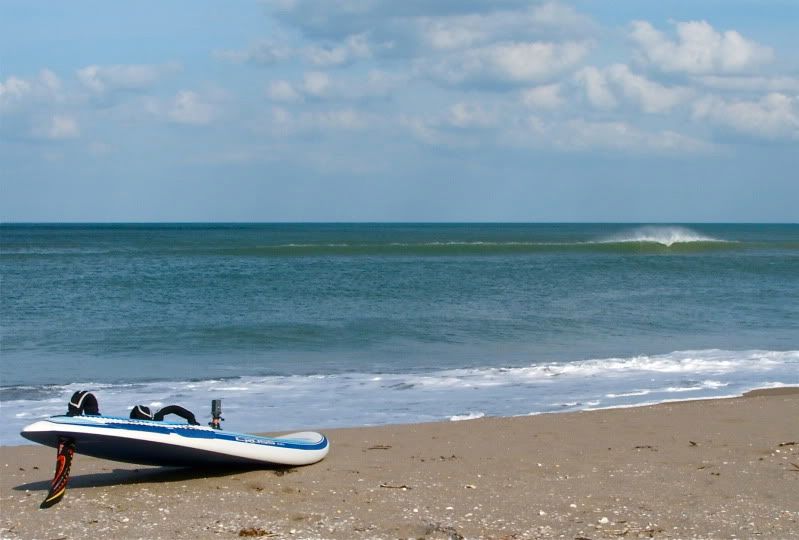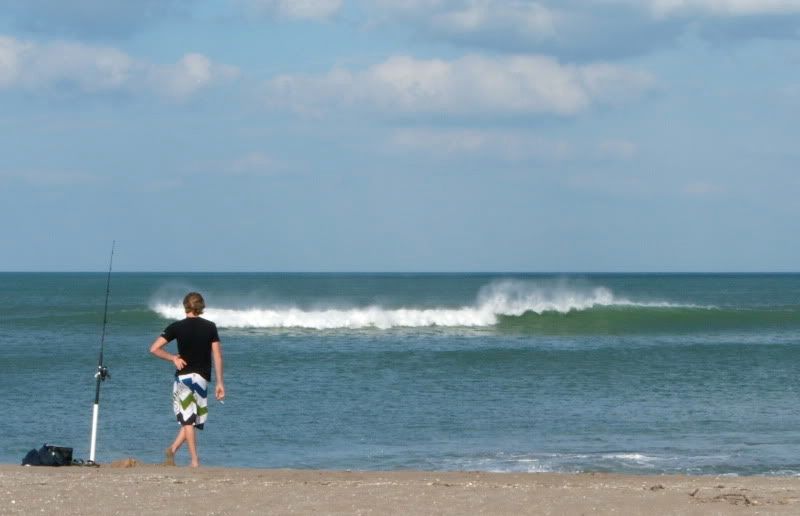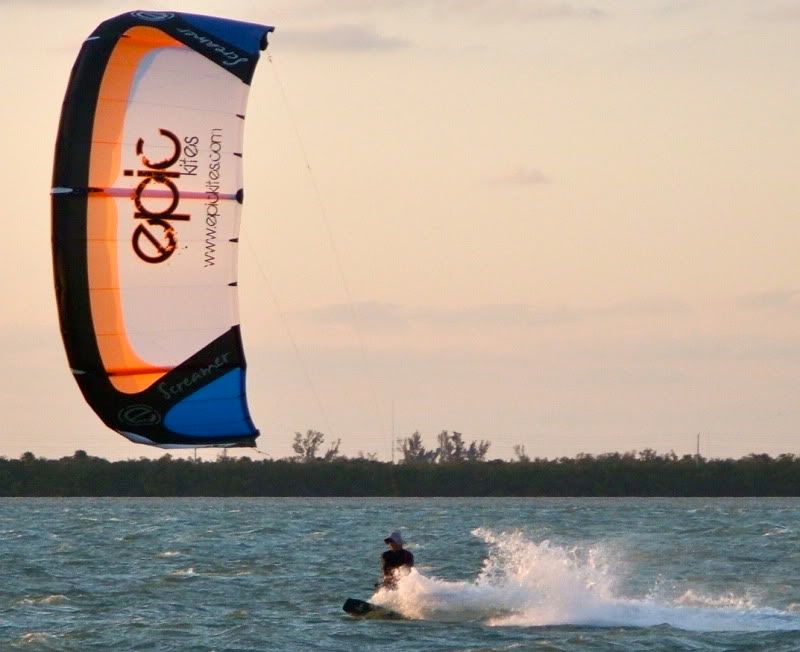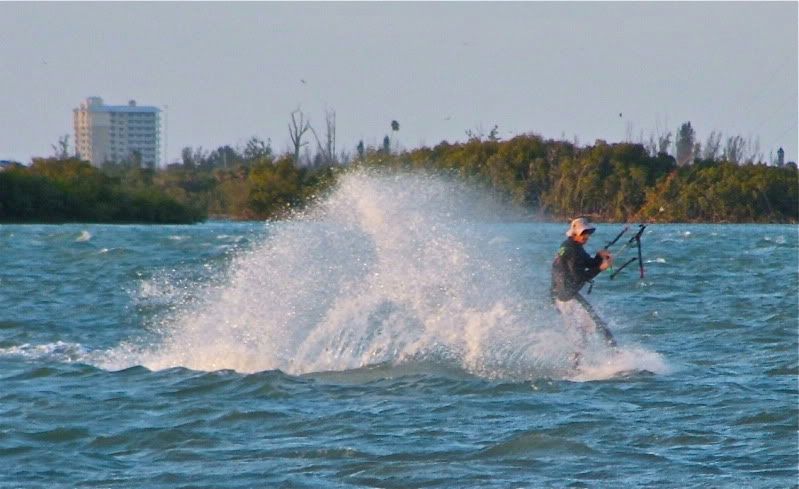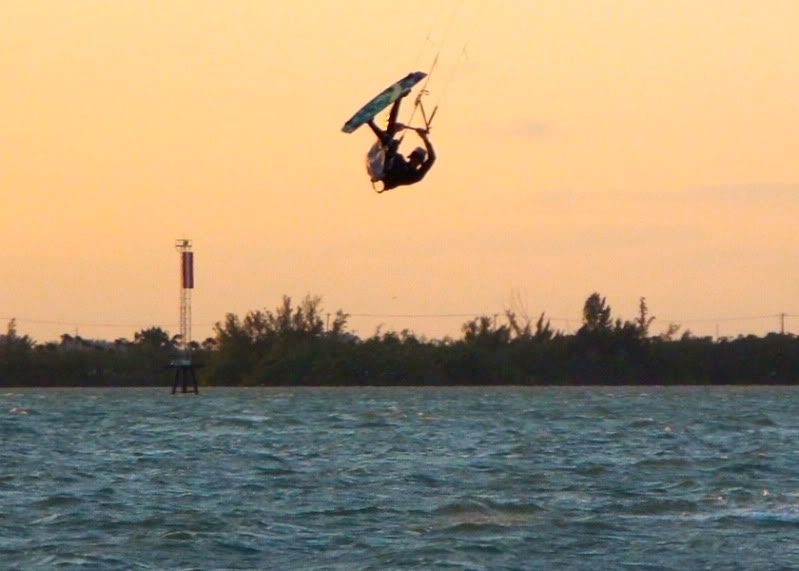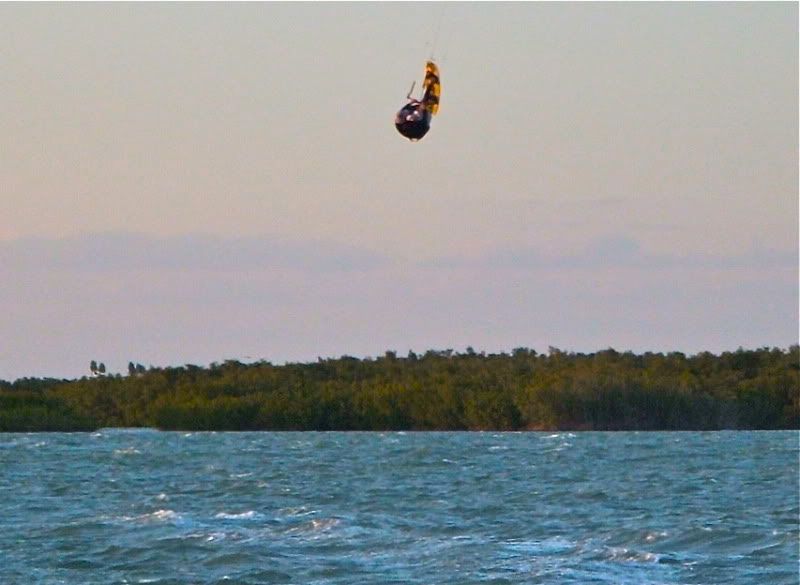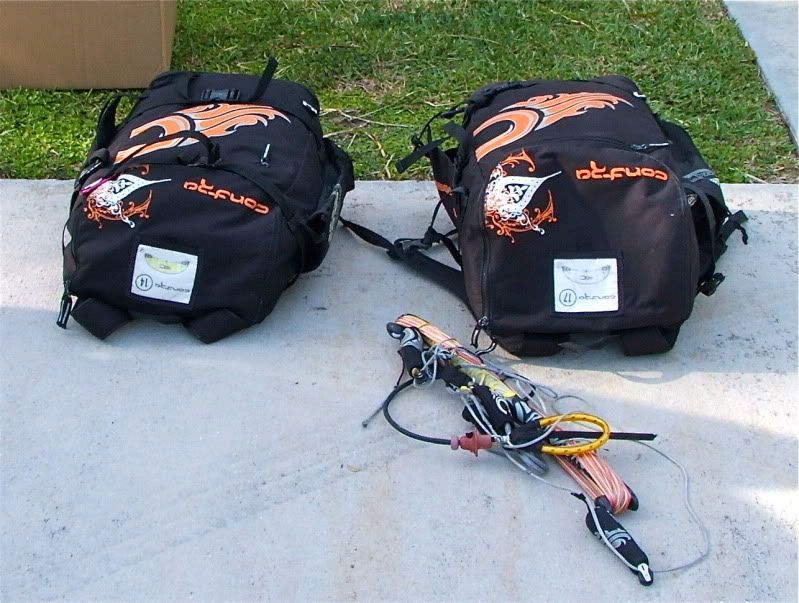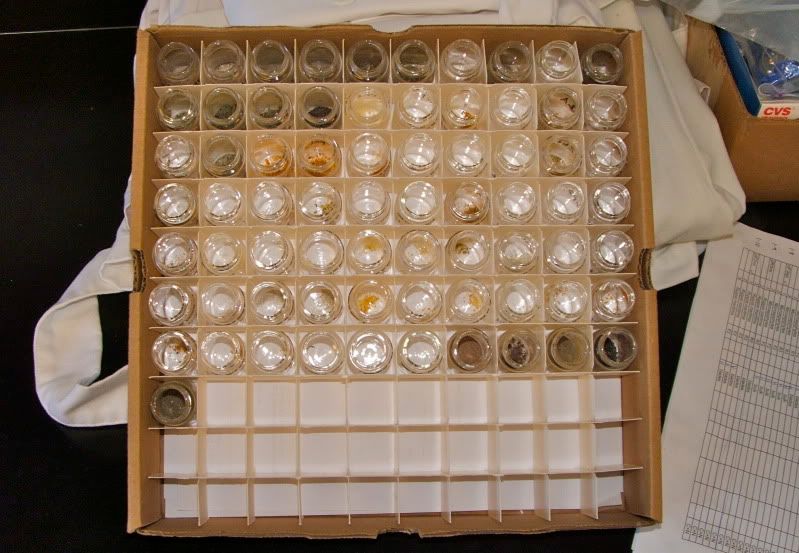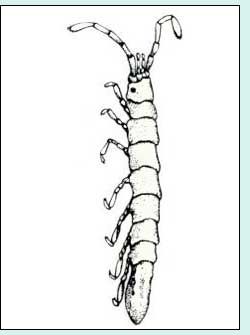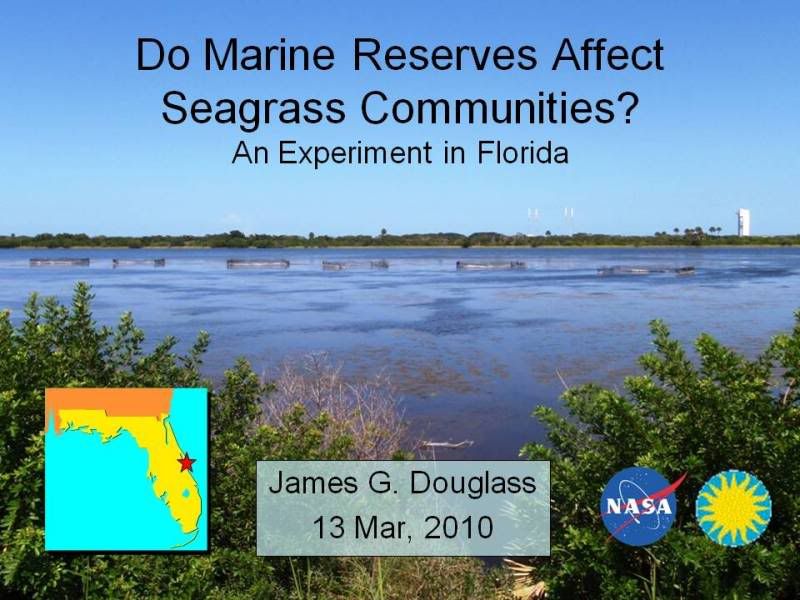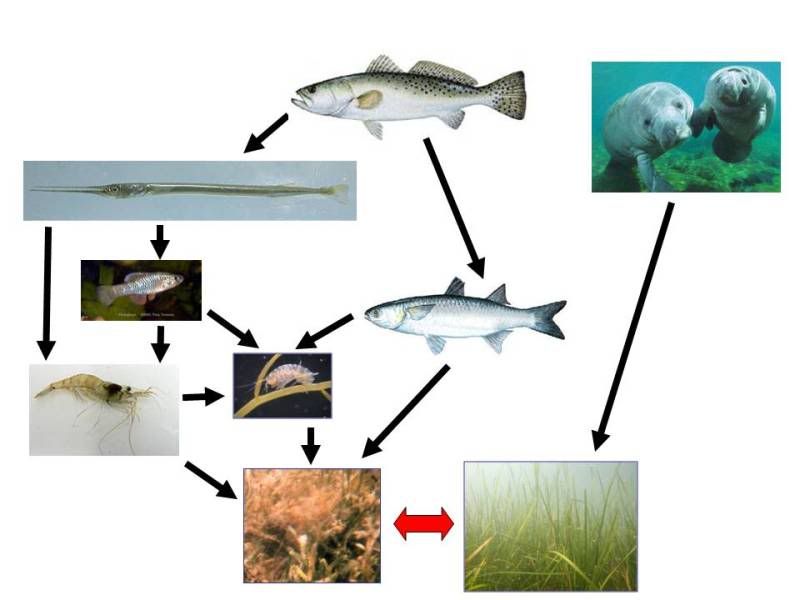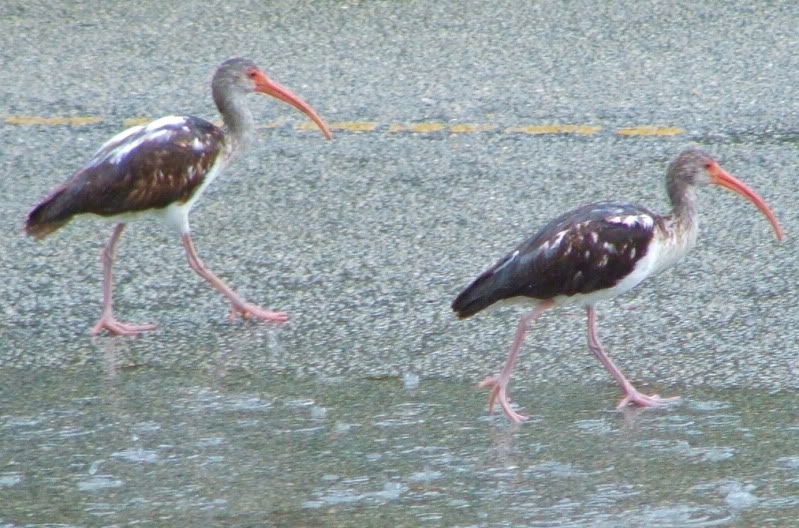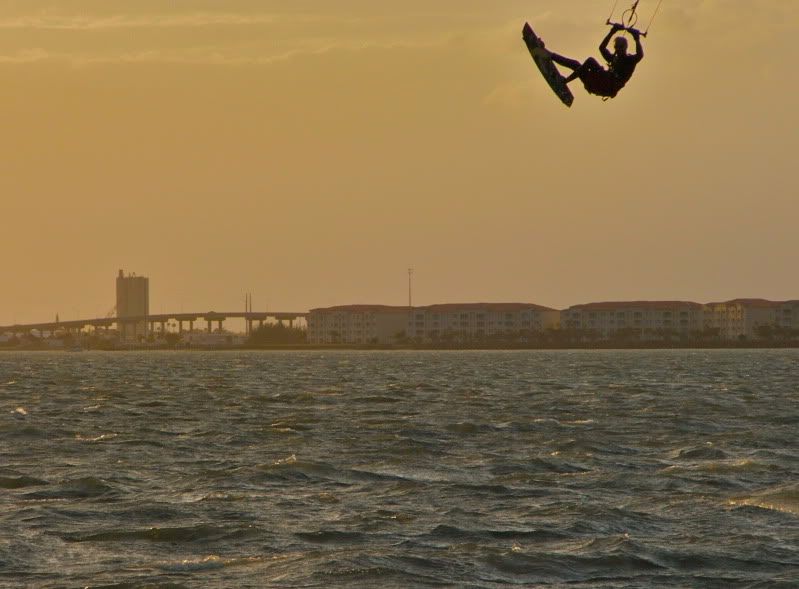The other day someone suggested that I write a post to explain a few things about kiteboarding to my non-kiteboarding readers. That struck me as a good idea, and one that might help promote safe and happy beach sharing among kiters, windsurfers, and other folks. Here it is:
Kiteboarding Stuff for Non-Kiters To Know0.
NEVER grab or hold the lines. That's the most important thing, so I put it at the beginning.
1. Just like you shouldn't stand in the cone of area in front of a golfer where a wild shot might hit you, you should avoid the cone of area
downwind of a kiter where an out-of-control kite or rider might go. This is true whether you're on the beach or on the water. Of course, it's also the kiter's own responsibility to avoid spots where there will be people in his downwind danger zone, and if you see a kiter being reckless or stupid in that way, you should diplomatically advise him to pick a safer spot.
2. When you tug on the line attached to one side of a kite, the kite turns in that direction.

3. Kites pull harder the faster they are moving through the air and the closer they are to straight downwind of the kite flyer. When you stop turning the kite it flies to a position nearly perpendicular to the wind direction, where it pulls a lot less. That's called the edge of the wind window.

4. Launching and landing a kite is typically done at the edge of the wind window, like, 90 degrees to the right or left of the kiter with respect to the wind direction. If you're launching someone's kite, just stand and hold it by the leading edge while they get in position. Don't let go until they give you the thumbs up signal.

5. Most kites for kiteboarding have four lines. The outer lines on the bar attach further back on the kite and steer the kite. The inner lines on the bar attach more forward on the kite and allow the kite to luff (depower) when you slacken the back lines. The front lines go through a hole in the center of the bar and connect to a harness attachment called the "chicken loop". Being attached to the chicken loop lets the rider depower the kite at any time by pushing the bar away, slackening the back lines.


6. Besides the chicken loop, kite bars can have a variety of features for safety and fine tuning of kite power. The trim system, which usually involves straps or cleats, adjusts the length of the front lines so you can set the average power level you like, and then make short-term adjustments the usual way by pushing and pulling on the bar. A twig of rubber tubing called the donkey dick locks your harness hook into the chicken loop so you don't accidentally unhook, but various emergency releases let you disconnect yourself from the kite if you need to. A leash connected to your harness can attach to different places on the bar and lines so that if you do accidentally unhook and lose the bar the kite will depower but stay attached to you.

7. The most popular kites for kiteboarding are "leading edge inflatable" (lei) kites, because they are the easiest to relaunch off the water if they crash. The older style lei's are called "C" kites and the newer type are called "bow" kites. Bow kites are better and safer all around, but some people who like to do crazy tricks still prefer C kites. My kite is a bow kite.

8. The only safe way to carry an inflated kite is standing on the upwind side of it, holding the leading edge, with the kite upside down. When you have to set it down, flip it over right side up and chunk it onto the ground leading edge down, facing it directly into the wind. The wind will usually hold it down in that position, but to be safe you should also weigh it down with sand or a board or something.

9. If you want to learn kiteboarding safely you need to practice first with a trainer kite <4 meters squared, and then you need to take a lesson.
10. Windsurfing has not been cancelled.
